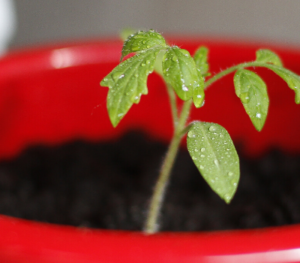February 2020
by Scott Canning, Director of Horticulture and Special Projects
Winter means SEEDS! As I wrote last year, growing from seed has some distinct advantages over other means of propagation. A packet of seeds can hold dozens to thousands of potential plants, and you probably have a mailbox full of seed catalogs, or websites bookmarked on your computer. Going online is becoming the gold standard for seed shopping, because of the paper and carbon emissions saved—and you save time, because your order can turn around faster. Confused where to start? I found this website that aligned with my beliefs and my favorite sources. To this list I must add this year some that I overlooked, like John Scheepers Kitchen Garden Seeds. Also, last year I neglected my home town favorite, Plants of the Southwest. And for chiles, Sandia Seeds is a great source, all non-GMO. And when you are shopping for seeds of herbs (and they ship some plants) a standout is Richters, out of Canada. I am sure to be slighting worthy seed sources: The trade in seeds has been growing massively, which is a very good thing.
The link above to Small Footprint Family also contains helpful links to discussions about the kinds of seeds available today. If you are uncertain of the differences between “open pollinated”, “hyb rid” and “GMO” seeds, there is a good primer there. I have a strong but not exclusive preference for “open pollinated” seeds. On the East Coast, I grew many varieties of heirloom tomato, but starting in 2009 my tomato patches suffered when we had epidemics of “late blight” that destroyed my tomato crops in a matter of days. Ever since, I have planted at least a few hybrid tomatoes varieties bred for strong resistance to late blight (‘Defiant’, ‘Iron Lady’, and ‘Lemon Boy’, for example). In bad blight years, I would be spared a complete wipeout thanks to these highly disease-resistant hybrids. In New Mexico, viruses and nematodes are bigger problems than fungal disease, I have discovered to my horror. Stay tuned for strategies to limit damage from these creeps.
rid” and “GMO” seeds, there is a good primer there. I have a strong but not exclusive preference for “open pollinated” seeds. On the East Coast, I grew many varieties of heirloom tomato, but starting in 2009 my tomato patches suffered when we had epidemics of “late blight” that destroyed my tomato crops in a matter of days. Ever since, I have planted at least a few hybrid tomatoes varieties bred for strong resistance to late blight (‘Defiant’, ‘Iron Lady’, and ‘Lemon Boy’, for example). In bad blight years, I would be spared a complete wipeout thanks to these highly disease-resistant hybrids. In New Mexico, viruses and nematodes are bigger problems than fungal disease, I have discovered to my horror. Stay tuned for strategies to limit damage from these creeps.
Growing plants from seed was initially frustrating for me, until I started to grow under artificial lights in a controlled environment. My seedlings either baked on a hot dry day on my windowsill, or turned pale, stretched, and died from lack of sufficient light. There are many options for plant lighting systems out there, but I am simply starting seeds, not growing marijuana or another cash crops. I chose a T5 fluorescent light fixture with four, 4-foot bulbs. It is a small capital expenditure, gives me more than enough well-lit space (more than 12 square feet) to start all my seeds, and stores easily the rest of the year. The cost of LED systems is coming down, but at this time they still make more sense for investing in year-round growing, and I’m talking about approximately 12 weeks of seed starting. T5 bulbs are efficient, inexpensive and stay quite cool.
Growing seeds under humidity domes also transformed my experience, but commonly available kinds were either too short, or too flimsy. I now grow in trays fitted with ventilated, clear acrylic domes that are tall. I use the “XL High Dome Propagator” from the Greenhouse Megastore. They are nearly 16” wide by 23” long and almost 9” tall, so my seedlings don’t press against a wet plastic dome, inviting disease. Important here is timing: If you start your seeds too early, you will struggle to keep them healthy indoors before the weather settles enough to plant out. I like the seed calculator from Johnny’s Select Seeds. I put in May 12th– that was our last SNOW and frost date in 2019. If you are in Albuquerque, Pecos, Red River or Taos, adjust the “last frost date” accordingly.
The nuance involved in growing plants from seed is way beyond the scope of this piece. If you explore beyond conventional vegetable garden seeds, you need to discover the world of seed dormancy, and how to overcome it. I greatly admire the huge amount of work that Margaret Roach shares on her incredible blog, I don’t believe in re-inventing the wheel, and Margaret should win an award for assembling so much info on seed-starting in one place. I encourage you to explore along with her, and once you have the right, basic equipment, I dare you to avoid get hooked. Your life and your garden will be much improved by this exciting adventure; give seed starting a try!


